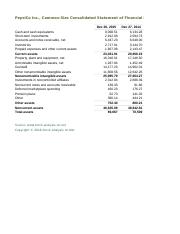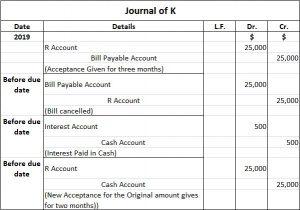
AI can also lessen financial crime through advanced fraud detection and spot anomalous activity as company accountants, analysts, treasurers, and investors work toward long-term growth. Artificial intelligence (AI) and machine learning in finance encompasses everything from chatbot assistants to fraud detection and task automation. Most banks (80%) are highly aware of the potential benefits presented by AI, according to Insider Intelligence’s AI in Banking report. Bank default prediction models often rely solely on accounting information from banks’ financial statements. To enhance default forecast, future work should consider market data as well (Le and Viviani 2018). Fraud detection based on AI needs further experiments in terms of training speed and classification accuracy (Kumar et al. 2019).

What is Artificial Intelligence (AI) in Finance?
More frontrunners rated the skills gap as major or extreme compared to the other groups. While a higher number of implementations undertaken could partly explain this divergence, the learning curve of frontrunners could give them a more pragmatic understanding of the skills required for implementing AI projects. Companies can also look at making best-in-class and respected internal services available to external clients for commercial use. For developing an organizationwide AI strategy, firms should keep in mind that these might be applied across business functions. Starting purposefully with small projects and learning from pilots can be important for building scale.
Artificial Intelligence in Financial Services: Applications and benefits of AI in finance
Though we have done the research work for you and analyzed the best AI finance software based on 13 data points across four categories, you should take the time to identify the problem you want the tool to solve and the specific features you need before making a decision. https://www.wave-accounting.net/onsite-tax-attorneys-in-los-angeles/ The audit solution provided by Trullion allows the execution of audits for multiple clients using automated and intelligent workflows. The platform enables collaboration between auditors and accounting teams, which can help to reduce the duration and cost of audits.
Explore the Financial services collection
- The company’s applications also helped increase automation, accelerate private clouds and secure critical data at scale while lowering TCO and futureproofing its application infrastructure.
- Among the financial institutions we studied, four organizational archetypes have emerged, each with its own potential benefits and challenges (exhibit).
- Therefore, it is not surprising that a growing strand of literature has examined the uses, benefits and potential of AI applications in Finance.
- He serves at the forefront of insurance industry disruption by helping clients with digital innovation, operating model design, core business and IT transformation, and intelligent automation.
Domo’s platform enables finance professionals to access information to support financial planning, budgeting, forecasting, and reporting. Our evaluation found that you can connect Domo with 203 finance apps, including NetSuite, QuickBooks, Sage Intacct, Xero, and FreshBooks. Intuit’s new feature, Intuit Assist, powered by generative AI, is an AI-enhanced financial assistant that provides intelligent insights and personalized data-backed recommendations to help you make informed financial decisions and optimize your business operations. AI finance tools have seen a surge in interest and investment since the explosion of generative artificial intelligence (AI) created by the debut of ChatGPT.
Time is money in the finance world, but risk can be deadly if not given the proper attention. “Investors trying to unpick the strategy will soon get lost in a tangle of different layered models and data sets,” he said. The model has been designed by Ultramarin, an AI investment specialist company, to predict the monthly excess return for each stock in the investment universe of eurozone equities.
The use of AI in finance is gaining traction as organizations realize the advantages of using algorithms to streamline and improve the accuracy of financial tasks. Step through use cases that examine how AI can be used to minimize financial risk, maximize financial returns, optimize venture capital funding by connecting entrepreneurs to the right investors; and more. A valuable research area that should be further explored concerns the incorporation of text-based input data, such as tweets, blogs, and comments, for option price prediction (Jang and Lee 2019). Since derivative pricing is an utterly complicated task, Chen and Wan (2021) suggest studying advanced AI designs that minimise computational costs. Funahashi (2020) recognises a typical human learning process (i.e. recognition by differences) and applies it to the model, significantly simplifying the pricing problem.

QuickBooks streamlines accounting for small businesses by automating tasks such as bookkeeping, invoicing, time tracking, sales tax management, budgeting, bank reconciliation and inventory tracking. AI’s data-crunching capabilities empower investors by providing comprehensive risk assessments based on historical data and market trends. This wealth of information equips financial advisors with insights crucial for informed investment decisions, fostering a more confident and aware investor community.
“The obvious holy grail here is that an AI strategy can leverage huge and diverse data sets to glean unique investment insights and provide consistent alpha to investors,” he said. Ease of use was evaluated based on the software’s user interface, navigation, and overall user experience. Factors such as accessibility and intuitiveness were considered in determining the ease of use of each tool. Using AI, the revenue recognition system allows users to generate reports, identify discrepancies, and ensure compliance with regulatory requirements. This is achieved by extracting data from various information systems such as billing, CRM, contracts, and Excel workbooks and validating it all on the Trullion platform.
We can notice that, although it primarily deals with banking and financial services, the extant research has addressed the topic in a vast array of industries. This confirms that the application potential of AI is very broad, and that any industry may benefit from it. AI significantly increases operational efficiency in finance by streamlining processes and expediting transactions and decision-making. By automating routine tasks like data analysis and report generation, AI reduces manual effort, allowing staff to focus on strategic tasks. An f5 case study provides an overview of how one bank used its solutions to enhance security and resilience, while mitigating key cybersecurity threats.
For instance, Chen et al. (2013) evaluate real estate investment returns by forecasting the REIT index; they show that the industrial production index, the lending rate, the dividend yield and the stock index influence real estate investments. All the forecasting techniques adopted (i.e. supervised machine learning and ANNs) outperform import into adp run payroll 2020 linear models in terms of efficiency and precision. In this section, we explore the patterns and trends in the literature on AI in Finance in order to obtain a compact but exhaustive account of the state of the art. Specifically, we identify some relevant bibliographic characteristics using the tools of bibliometric analysis.
Let’s explore several examples of how AI is benefiting the financial sector as well as its potential risks. “I wouldn’t make any big financial decisions without also speaking to a fiduciary,” says Genkin. But a significant number of Americans feel like https://www.simple-accounting.org/ they’re behind on achieving their money goals. Naturally, banks encounter distinct regulatory oversight, concerning issues such as model interpretability and unbiased decision making, that must be comprehensively tackled before scaling any application.
With existing vendor relationships and technology platforms already in use, this is likely the easiest option for most companies to choose. Frontrunners have taken an early lead in realizing better business outcomes (figure 8), especially in achieving revenue enhancement goals, including creating new products and pursuing new markets. It is no surprise, then, that one in two respondents were looking to achieve cost savings or productivity gains from their AI investments. Indeed, in addition to more qualitative goals, AI solutions are often meant to automate labor-intensive tasks and help improve productivity.
Roughly 30 percent use the business unit–led, centrally supported approach, centralizing only standard setting and allowing each unit to set and execute its strategic priorities. The remaining institutions, approximately 20 percent, fall under the highly decentralized archetype. These are mainly large institutions whose business units can muster sufficient resources for an autonomous gen AI approach.
Table 2 comprises the list of countries under scrutiny, and, for each of them, a list of papers that perform their analysis on that country. We can see that our sample exhibits significant geographical heterogeneity, as it covers 74 countries across all continents; however, the most investigated areas are three, that is Europe, the US and China. These results corroborate the fact that the above-mentioned regions are the leaders of the AI-driven financial industry, as suggested by PwC (2017).






